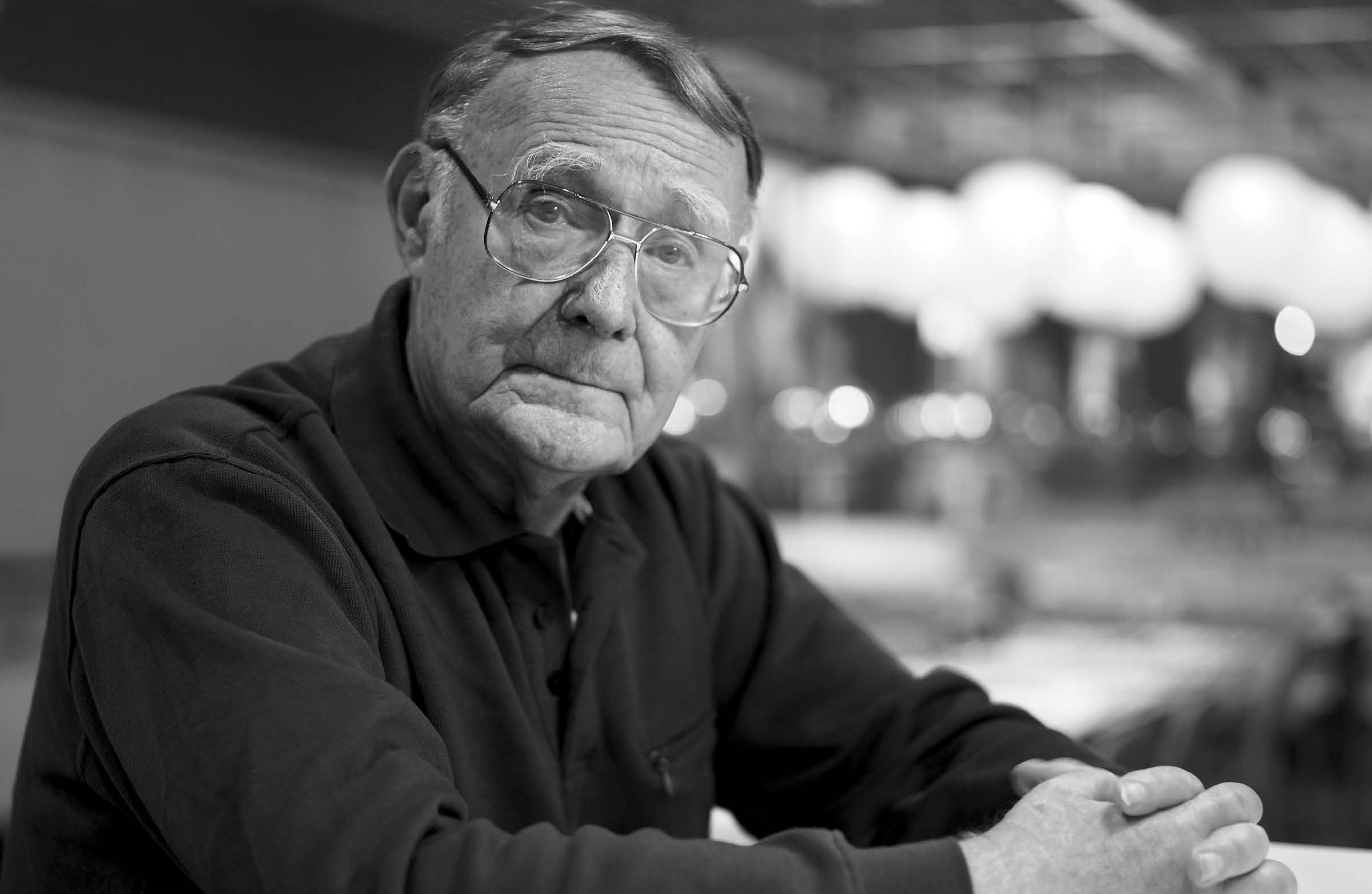



There’s a good reason that IKEA is a household word while virtually nobody can name the man behind it. The Swedish company, now based in the Netherlands, was founded by multibillionaire Ingvar Kamprad, whose lifestyle is as modest as IKEA’s minimalist product design, packaging, and pricetags.
Born in 1926 in Sweden, Kamprad reportedly developed the no-frills retailing concept behind IKEA as a teenager at his uncle’s kitchen table. (IKEA is derived from its founder’s initials plus Elmtaryd, the family farm in Sweden where he was born, and the nearby village of Agunnaryd.) On a less positive note, he also flirted with fascism during World War II, an interest that he later blamed on his family’s German roots and that he has called “the greatest mistake of my life.”
In 2007, Forbes ranked Kamprad the fourth wealthiest person in the world with a net worth of $33 billion; by 2011 he’d suffered the biggest downgrade of wealth on the list, and is currently said to be worth about $3 billion. The reason for the drop? Philanthropy . . . and tax laws. Most of IKEA’s stock was transferred to a holding company and the Stichting INGKA Foundation (INGKA is derived from Kamprad’s first and last names); under the laws of the principality of Liechtenstein, where the foundation is headquartered, he cannot profit from the business. In June of 2013 Kamprad stepped down from the board, turning over control to his three sons.
Whether the foundation was established as a philanthropic vehicle, a tax dodge, or an anti-takeover device is debatable. In 2006 the Economist reported that the INGKA Foundation was the largest of its kind in the world, with assets estimated at $36 billion; it also noted that it was “one of [the] least generous.”
That might not come as a total surprise, given its legacy. Kamprad, who relocated from Sweden to Switzerland decades ago to save taxes (he has stated that he plans to return to Sweden) is famously frugal. He drives a 20-year-old Volvo, flies economy and books second-class rail, stays at inexpensive hotels, reuses his tea bags, and pilfers salt and pepper packets from restaurants. In an effort to preserve natural resources as much as pinch pennies, he also asks employees to use both sides of a piece of paper when they are writing anything down. (Among the maxims from the so-called IKEA bible which he authored: “A waste of resources is a mortal sin at IKEA.”)
To his credit, however, Kamprad is working to change the image of the foundation, which he chairs and whose stated purpose when it was established in 1982 was “to promote and support innovation in the field of architectural and interior design.” Following the Economist’s critique, he went to court for permission to give more funds to young people in the developing world. In 2011, the foundation announced plans to increase its contributions to about $135 million per year, to be divided among a refugee camp in Kenya, United Nations agencies that help children and refugees, and Save the Children.